Note: This website was automatically translated, so some terms or nuances may not be completely accurate.
Public Diplomacy Undertaken by Mikimoto Pearl Island
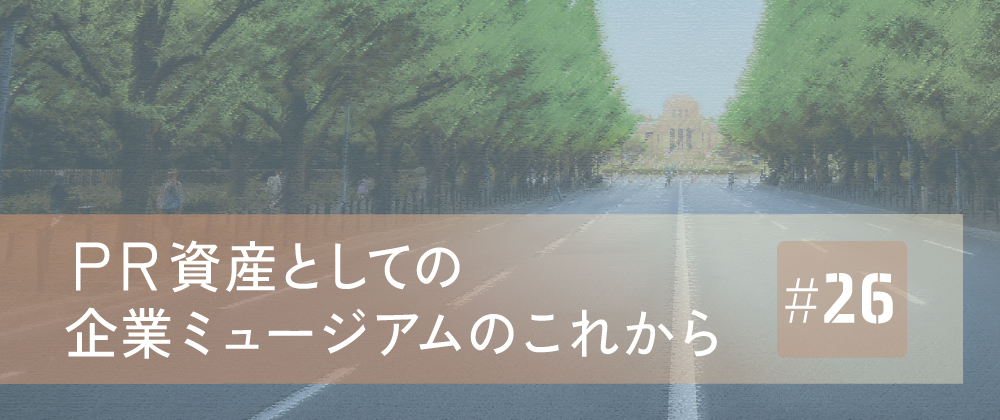
Corporate museums occupy a buffer zone spanning both the academic realm of "museums" and the business realm of "corporations." They are organizations that collaborate diversely with corporate departments such as public relations, branding, advertising, and human resources. In this series, PR professionals will introduce various museums operated by corporations, examining their roles, functions, and potential.
Kokichi Mikimoto (hereafter referred to without honorifics), the world's first successful pearl cultivator. As the founder of Mikimoto, Kokichi recognized the importance of public diplomacy early on, influenced by his close friend Eiichi Shibusawa. He opened Mikimoto Pearl Island in Toba City, Mie Prefecture, where he promoted pearls as Japan's proud "soft power" to the world while engaging in private diplomacy with various nations. After his passing, a museum was established on Mikimoto Pearl Island, welcoming numerous state guests from overseas. This article explores the potential of corporate museums from the perspective of public diplomacy.
Research and Text: Kyoko Fujii (PR Consulting Dentsu Inc.)
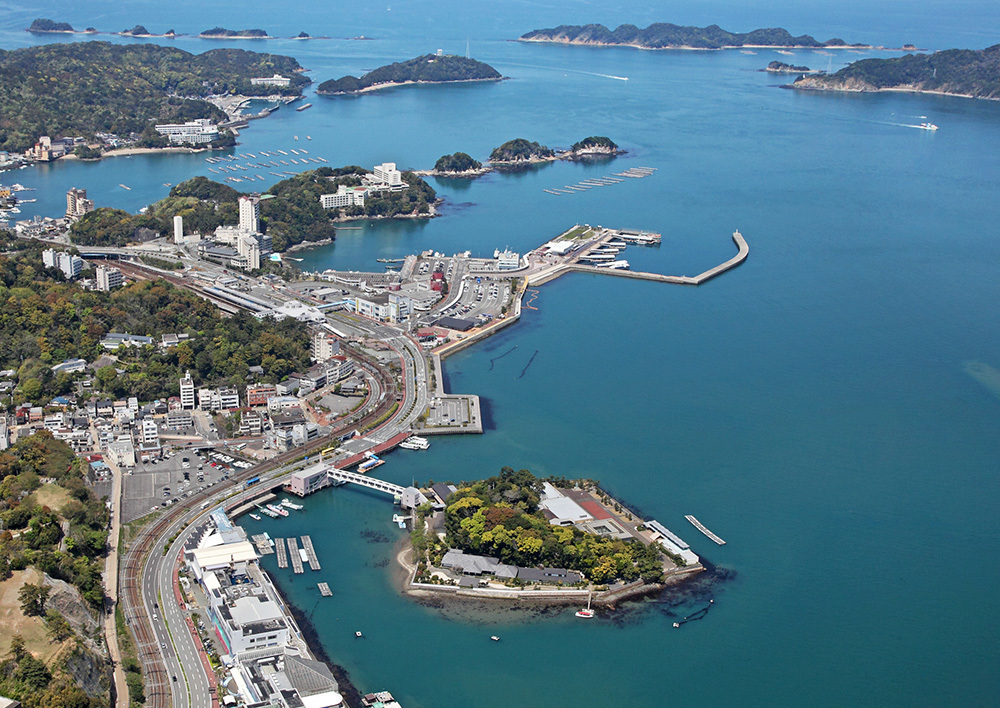
Mikimoto Pearl Island, floating in Toba Bay, Mie Prefecture, is the island where Mikimoto founder Kokichi Mikimoto achieved the world's first successful pearl cultivation in 1893 (Meiji 26). Originally called Ojima Island, Kōkichi purchased and developed it in 1929 (Shōwa 4), opening it to the public as a leisure facility in 1951 (Shōwa 26). The island houses two museums. They are operated by Mikimoto Pearl Island Co., Ltd., a group company of Mikimoto. Therefore, strictly speaking, it cannot be called a Mikimoto corporate museum. However, since Mikimoto's founder opened this island and one of the two museums on the island houses exhibits related to the founder's life and achievements, we would like to introduce it as a corporate museum in a broad sense.
A Museum Integrating Tourism, Education, and Industry
Mikimoto Pearl Island features two museums: the Pearl Museum and the Mikimoto Kokichi Memorial Museum. The Pearl Museum not only displays a collection of pearl jewelry but also introduces pearls from diverse perspectives including history, natural science, industry, and humanities. The Mikimoto Kokichi Memorial Museum showcases various exhibits delving into the life and character of Mikimoto Kokichi, the Pearl King from Toba City.
Although visitor numbers have declined in recent years due to the impact of the COVID-19 pandemic, Mikimoto Pearl Island, located within Ise-Shima National Park, welcomed approximately 157,000 visitors annually in 2019. It plays a significant role as an industrial tourism destination for the local Mie Prefecture. Beyond visitors for tourism or educational purposes, many individuals connected to the pearl industry, including Mikimoto employees in their second year of service, visit the island annually as part of their training.
Mikimoto maintains a cooperative relationship with the museum, holding regular meetings not only regarding training but also exhibition content and pearl research. Both museums offer extensive content for children, allowing elementary school students and others to learn about pearls not only through exhibits but also through hands-on experiences.
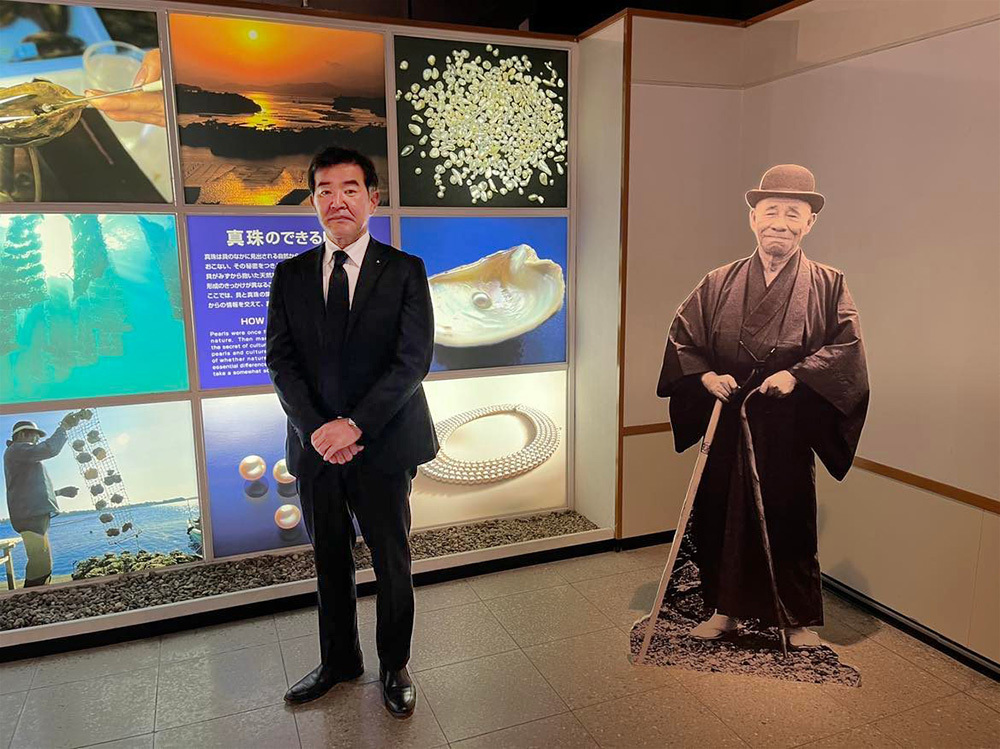
Targeting People Worldwide
A look at the travel review site TripAdvisor reveals that the island is attracting attention from around the world, with numerous reviews in English, Chinese, French, and other languages in addition to Japanese. Although located far from Tokyo, as of April 2023, about 20% of visitors to the island come from outside Japan.
Although most visitors come from neighboring countries, the island has become a popular tourist destination among French visitors since it was awarded two stars in the Michelin Green Guide Japan, a travel guide for foreign tourists visiting Japan. The island's pamphlets are available in English, French, German, Italian, Spanish, Portuguese, Chinese (simplified), Chinese (traditional), and Korean, in addition to Japanese. Currently, there are seven guides, including two staff members who are certified curators and several who can speak English, to assist visitors.
The operating company, Mikimoto Pearl Island, has actively promoted the site to overseas travel agencies to attract international tourists, seeking inclusion in tour packages. As a member of the Mie Prefecture Tourism Association and the local Chamber of Commerce and Industry, Mikimoto Pearl Island also collaborates with local governments like Mie Prefecture and Toba City on joint inbound tourism promotion activities.
What exactly is a pearl?
Mikimoto is a company headquartered in Koto Ward, Tokyo, with its flagship store in Ginza 4-chome, engaged in the manufacture and sale of jewelry. It also operates stores in major cities worldwide and boasts the largest global market share in pearl sales.
The pearls that form Mikimoto's core product line are gemstones formed inside six types of oysters, including the Akoya oyster. Before Kōkichi succeeded in pearl cultivation, only natural pearls existed. Since pearls form when a foreign object accidentally enters an oyster, not all oysters produce pearls. Furthermore, even when they do, unlike cultured pearls which are shaped into a round form by inserting a round nucleus, natural pearls are mostly irregularly shaped. Because they often lack a nucleus or have an extremely small one, it takes many years for them to grow large. Large, round natural pearls were extremely rare and expensive, found perhaps one in every thousand shells.
Pearls have been cherished by people since ancient Roman times, over 2000 years ago. In Egypt, they were already known around 3200 BC, with records documenting their use. Ancient Japan was also a major pearl-producing region, with pearls unearthed from early Jomon period sites. Ancient Japanese used pearls as tribute to China; descriptions of Japanese pearls remain in Chinese texts like the "Wei Zhi Wajinden" (Account of the Wa People in the Records of the Wei Dynasty) and the "Houhanshu" (Book of the Later Han). Pearls also frequently appear in classical Japanese texts such as the "Nihon Shoki" (Chronicles of Japan), "Kojiki" (Records of Ancient Matters), and "Manyoshu" (Collection of Ten Thousand Leaves).
Pearl Museum
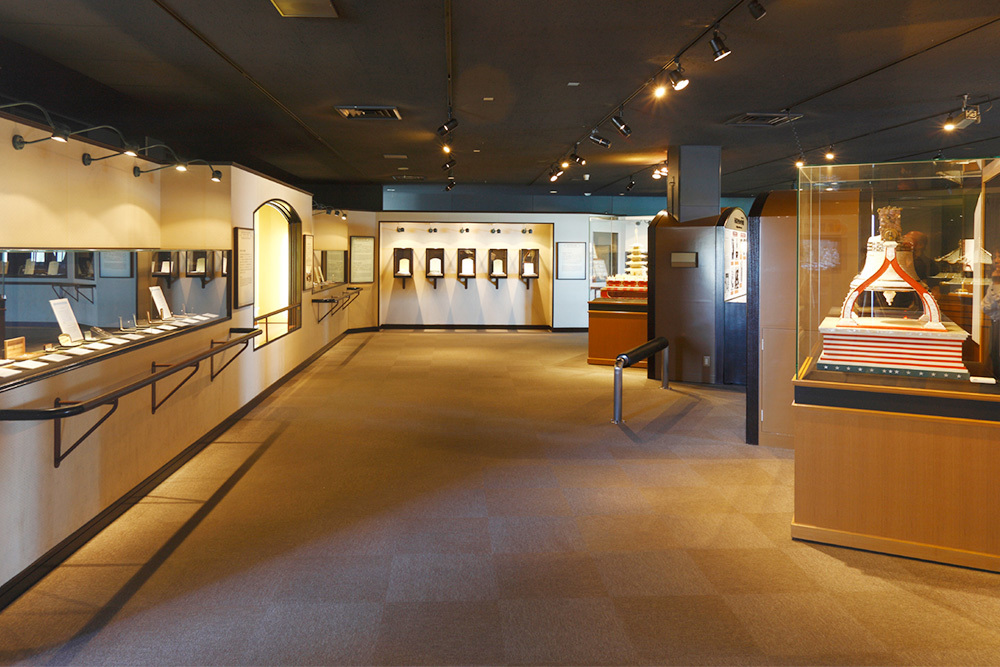
The Pearl Museum, Japan's first museum dedicated exclusively to pearls, explores the theme "People and Pearls: Considering Their Relationship." It provides detailed explanations of how pearls form and pearl cultivation methods, supported by numerous materials and videos.
It also displays an extensive collection of antique jewelry featuring natural pearls and numerous luxurious art and craft pieces lavishly adorned with cultured pearls. The collection includes ancient Roman jewelry dating back approximately 2,000 years, allowing visitors to learn about the history of jewelry not only in Japan but worldwide.
Mikimoto Memorial Museum
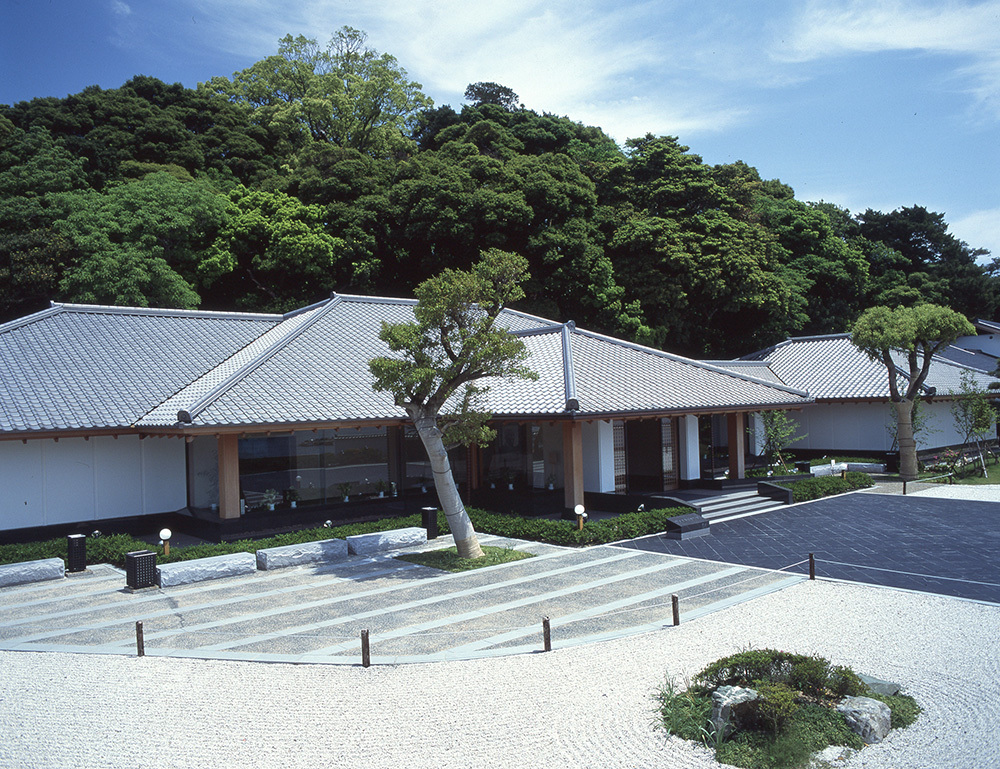
Meanwhile, the Mikimoto Kōkichi Memorial Museum displays the eventful life and achievements of Kōkichi, born in 1858 (Ansei 5) as the eldest son of the udon shop "Awa Kō" in Toba, through numerous photographs, personal belongings, and explanatory panels, chronicling his life until his death at age 96. His personal effects, including cherished items and collections, convey Kōkichi's unique philosophy of life and lifestyle.
From a young age, he gained extensive experience as a merchant, including selling vegetables door-to-door. At age 20, during an inspection trip to Tokyo and Yokohama, he saw Shima's specialty, pearls, selling for high prices. Kōkichi resolved not to leave the production of these highly valuable pearls to chance, but to create them himself.
Subsequently, through interactions with Yanaginarayoshi, Secretary-General of the Dai-Nichi Suisan-kai (Great Japan Fisheries Association), and Mitsukuri Kachikichi of Tokyo Imperial University, he became determined to pursue pearl cultivation. Overcoming numerous difficulties, on July 11, 1893 (Meiji 26), he succeeded in cultivating the world's first half-round pearl on Aishima Island (present-day Mikimoto Pearl Island) in Toba.
The Mikimoto Kōkichi Memorial Museum features a restored replica of his birthplace, "Awa-Kō," exhibits tracing Kōkichi's legacy in Toba, and a diorama offering a glimpse of Toba during that era, making his connection to his hometown a central theme.
Okikichi, who cherished the scenery of his hometown, had envisioned making the Shima Peninsula a national park since the Taisho era. In 1931 (Showa 6), he not only petitioned the Minister of Home Affairs with this proposal but also dedicated himself to improving transportation and roads, personally establishing parks on both the east and west sides of Mount Asama. His passion and efforts led to the creation of Ise-Shima National Park, the first national park established after World War II.
While neither museum is officially registered as a museum, the Pearl Museum is registered as a museum-like facility by the Mie Prefectural Museum Association. Both this museum and the Mikimoto Kōkichi Memorial Museum are also members of the Japan Museum Association, fulfilling academic and cultural missions such as organizing, preserving, and exhibiting valuable historical materials.
The Mikimoto Kōkichi Memorial Museum displays a letter addressed to Kōkichi from the inventor Thomas Edison. It is said that Mikimoto met Edison through an introduction by Eiichi Shibusawa. During a 1927 inspection tour of Europe and America, Edison reportedly told Mikimoto, "Your invention of the cultured pearl is a wonder to the world." This meeting between the two men was reported in The New York Times, and the name Mikimoto spread rapidly throughout America.

Ama Diving Demonstration Show
Mikimoto Pearl Island offers more than just museum exhibits. Visitors can also witness live demonstrations by ama divers. In the past, ama divers were indispensable to pearl cultivation. They dived to the seabed to collect Akoya oysters, implanted nuclei into the oysters, and returned them to the seabed. Furthermore, during red tide outbreaks or typhoons, they swiftly moved the oysters to safe locations. Without the ama divers' efforts, the success of cultured pearls would have been impossible.

While pearl farming techniques have advanced, eliminating the need for ama divers today, Pearl Island hosts these demonstrations to widely share the legacy of the ama who supported pearl cultivation. Though ama exist throughout Japan beyond Toba, Pearl Island is the only place where you can see them in their traditional white isoginu diving suits.
When the ama divers surface after diving, they exhale a breath that sounds like a whistle, a "pew pew" sound. This breath, carrying a melancholic, mournful tone, is called the "Ama's Iso-bue" (Sea-Wife's Iso Flute). It has become a representative feature of Ise-Shima and was selected as one of the Ministry of the Environment's "100 Sounds of Japan We Want to Preserve."
As Ambassadors of Public Diplomacy
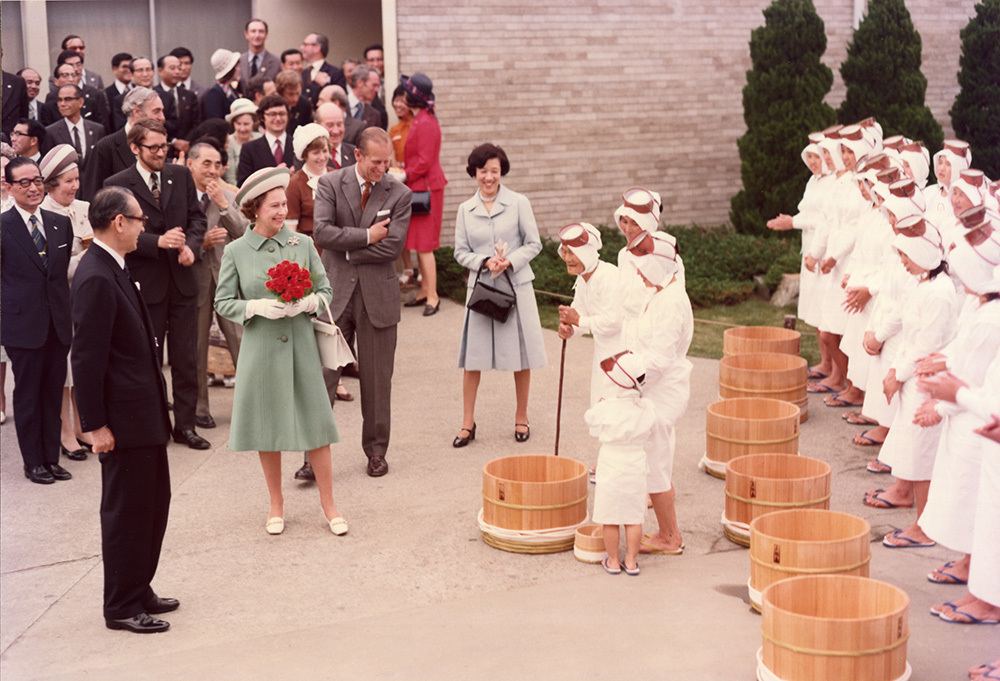
This island has welcomed numerous VIPs from Japan and abroad, including royalty, heads of state, ambassadors to Japan, the IOC President, and members of the Imperial Family. Past state guests include Queen Elizabeth II and Prince Philip (1975), Prince Rainier III and Princess Grace of Monaco (1981), and Queen Silvia of Sweden (1985).

Mikimoto Pearl Island also served as a venue for cultural diplomacy during the 2016 G7 Ise-Shima Summit. As part of the program welcoming spouses of participating leaders, the island hosted the husband of German Chancellor Merkel, the wife of Canadian Prime Minister Trudeau, and the wife of EU President Tusk. It truly serves as a diplomatic venue where Japan's "soft power" – pearls from the local region – deepens exchanges with other nations.
"Soft power" is a concept proposed by Harvard University Professor Joseph Nye. While "hard power" refers to the ability to compel other nations against their will through military or economic might, soft power is the ability to attract others through a nation's values and cultural appeal, thereby guiding them toward one's desired direction.
Thus, Mikimoto Pearl Island transcends being merely a promotional tool for the Mikimoto brand. As an industrial tourism facility, it contributes to the local economy while also serving as a vehicle for "public diplomacy" through Japan's "soft power" of pearls.
"Public diplomacy" differs from traditional government-to-government diplomacy, encompassing various forms of diplomacy involving numerous non-governmental organizations and individuals. It involves activities that directly engage foreign citizens and public opinion through public relations and cultural exchange, explaining Japan's position to people around the world and gaining their understanding to create fans of Japan. While its definition has varied over time, the actors in public diplomacy now include not only governments but also private organizations and individuals.
Encounter with Eiichi Shibusawa
The museum exhibits also reveal that Kōkichi was conscious of "public diplomacy." As the pearl industry grew into a major Japanese industry, Kōkichi deepened his relationships with influential figures in politics and business. Among these, his interactions with Eiichi Shibusawa, renowned as the father of Japanese capitalism and a pioneer of private diplomacy, are introduced through videos and other materials.
In 1926 (Taisho 15), after nearly a year of touring Europe and America, Kōkichi returned deeply impressed by the importance of private-sector exchanges with foreign nations. He immediately began developing Aishima Island. It is said that Shibusawa Eiichi also advised him, "Why not use the cultured pearls you invented as Japan's weapon and try your hand at private diplomacy?" The opening of the birthplace of cultured pearls quickly gained fame, attracting many visitors to Japan, including royalty, politicians, and ambassadors.

They likely shared their experiences on this island in various ways upon returning home, leaving a strong impression of Japanese pearls abroad. The photo files of guests preserved on this island are not merely commemorative albums; they are valuable records telling the history of "public diplomacy."
Public Diplomacy as Strategic Communication
Diplomacy cannot be left solely to governments. Especially in today's era of widespread social media, the power wielded by public opinion has significantly increased. Public sentiment can amplify negative feelings between nations or, conversely, foster the creation of positive emotions. In such times, international exchanges at the private level that can positively influence public opinion are becoming increasingly important.
Both public diplomacy and public relations (PR) are forms of strategic communication. Figures like Eiichi Shibusawa and Kokichi Mikimoto recognized the importance of engaging with foreign nations and put this into practice even before the war.
Mikimoto Pearl Island continues to operate today, inheriting Kōkichi's vision. It carries the significant mission of enhancing the international value of the Toba region, contributing to the development of local industry, and playing a role in public diplomacy.
[Editor's Note] (From the Web Dentsu Inc. Editorial Department)
Through this interview, we were reminded that a museum is essentially a "park." Not the kind found in neighborhoods with jungle gyms and sandboxes, but more like a national park.
The character "博" in "museum" carries the meaning of "to spread." It spreads the path Mikimoto has walked and makes it a matter of public interest.
I've heard that one thing foreigners visiting Japan are often surprised by is the sheer number of "parks." What blows them away first and foremost is the existence of the Imperial Palace. They find it amazing that in the heart of Tokyo, one of the world's largest cities, there exists such a massive "park" called the Imperial Palace!
The essence of a museum is quite similar. It's not about boasting about the company's achievements, but rather about opening up the journey the company has taken to the public, inviting people to enjoy it. That sentiment comes through clearly.
Was this article helpful?
Newsletter registration is here
We select and publish important news every day
For inquiries about this article
Back Numbers
Author

Kyoko Fujii
PR Consulting Dentsu Inc.
Executive Office, Public Relations Department / Visiting Associate Professor, Graduate School of International Liberal Arts
Supports public relations for domestic and international companies, governments, and municipalities. Currently serves as the company's public relations officer. Received the 2015 Golden World Award from the International Public Relations Association. Authored and edited works include: 'Municipal PR Strategy: Learning from 17 Success Stories' (Jiji Press), 'Communicating: A Guide to PR in Japan' (Wiley), and 'Welcome to the Corporate Museum: Volumes 1 & 2' (Jiji Press). Certified PR Planner by the Japan Public Relations Association. Visiting Associate Professor at the Graduate School of Global Communication and Language, Akita International University, starting in 2024.




